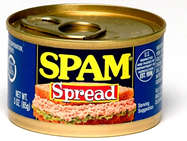I like user feedback and comments from people in projects I participate in – even those that I run or maintain myself. I value bug reports and I think no project can evolve without a fair amount of external input.
But they can also be annoying since when done in public places they tend to stick around. If they’re negative I can respond to them if posted in forums where that is possible and where I care about it, but sometimes they’re just “blurted” out in a way that I cannot respond to and that I cannot do anything about. And the review/comment/complaint will sit there to be watched by the world. Uncommented by me or anyone else thinking otherwise.
Let me point out the recent example that made me write this particular rant: user review on curl at ohloh.
I realize there’s nobody to blame and that this is the way of life and how things work and that everybody is entitled to publish their opinions and all that. It still doesn’t feel really good when you just don’t agree with them and they’re “against” one of your own babies.




 I’ve always been proud of my ability to read and respond to email in a swift and reliable manner. I read and write emails every day, and most days I read mails more or less immediately as they land in my inbox.
I’ve always been proud of my ability to read and respond to email in a swift and reliable manner. I read and write emails every day, and most days I read mails more or less immediately as they land in my inbox.